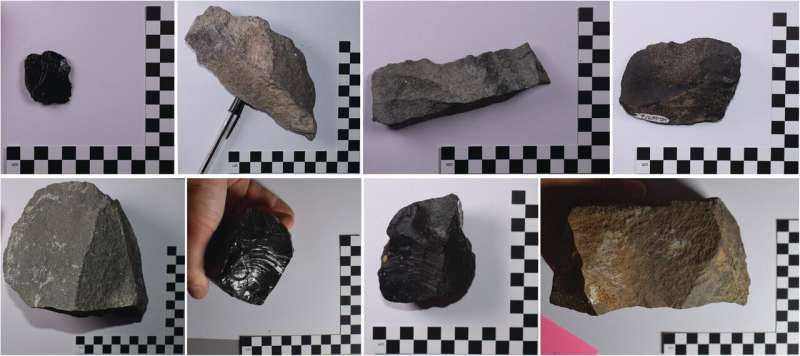🧐 Ancient Beat #149: Metallurgy, language, and psychoactive blue lotus
Good morning, folks! And welcome to issue #149 of Ancient Beat. Here’s the latest ancient news. 👇
🗞 Ancient News: Top 5
New Evidence Emerges On Origins Of Metallurgy — Excavations at a 7,000-year-old site in southeastern Turkey suggest metallurgy may have originated earlier and more independently than previously thought. Researchers at Çayönü uncovered slag and a copper bead in a structure interpreted as a workshop, dating to around 5000 BCE. The presence of crucible fragments, ore, and furnace evidence indicates on-site smelting rather than cold-hammered native metal use. This challenges the belief that metallurgy was first developed in the southern Levant or Iran and diffused outward. Instead, the findings imply that communities in Upper Mesopotamia may have independently developed metal technologies by experimenting with fire and local copper ores.
When Did Humans Start Talking? Genomic Evidence Pushes Language Back to 135,000 Years Ago — A recent genomic study suggests that the capacity for language in Homo sapiens dates back at least 135,000 years. By analyzing genetic divergences among early human populations, researchers propose that linguistic ability must have existed before the first major population split. This challenges previous theories linking the emergence of language to symbolic artifacts and complex social behaviors appearing around 100,000 years ago. The study posits that language may have developed as an internal cognitive tool before manifesting in outward cultural expressions. This linguistic capability could have provided Homo sapiens with a significant advantage over other hominins, facilitating enhanced cooperation, teaching, and planning.
Researchers Propose New Hypothesis For the Origin of Stone Tools — A new hypothesis suggests early humans may have used naturally sharp stones called “naturaliths” long before they began intentionally crafting tools through knapping. Rather than the traditional idea of a sudden discovery of tool-making, the proposal argues that hominins first relied on these naturally occurring sharp-edged rocks for cutting tasks. Such stones, formed through geological or biological processes like rockfalls, water currents, or animal trampling, are more abundant in nature than previously believed. Fieldwork in places like Kenya, Oman, and Northern Ireland revealed large quantities of these sharp stones in varied landscapes. These naturaliths may have been used for food processing, providing a survival advantage. Over time, the need for more consistent access to cutting tools or better-shaped flakes could have spurred intentional knapping. If confirmed, this theory could push the earliest evidence of tool use back to 3–6 million years ago.
Monumental Tomb Uncovered In Fabled Greek City — A massive tomb has been uncovered in the ancient city of Tenea in southern Greece, dating to the late 4th or early 3rd century BCE. The burial complex features vaulted chambers, stone benches, and elaborate offerings, suggesting the interment of a high-status individual. Grave goods include clay figurines, glass vessels, coins, and jewelry, including a gold ring and earrings. The site’s layout and scale reflect Hellenistic architectural trends and indicate that Tenea — a city said to have been founded by Trojan War prisoners — was more affluent and influential than previously assumed. The tomb's construction and offerings point to elite funerary practices in a thriving post-Classical community.
Investigating The Psychedelic Blue Lotus Of Egypt, Where Ancient Magic Meets Modern Science — The Egyptian blue lotus (Nymphaea caerulea), revered in ancient mythology and used in rituals over 3,000 years ago, may have held true psychoactive properties — but not in the way modern products suggest. Analysis of verified blue lotus samples, including a rare living plant at UC Berkeley, found significantly higher levels of the alkaloid nuciferine than those in online-sold versions, which are often a different, non-psychoactive lily species. Chemical testing revealed that soaking the flower in wine alone may not release its psychoactive effects; instead, the alkaloid appears to require a fat-based substance— like infused oil —to dissolve effectively. This supports the idea that ancient Egyptians used a lotus-infused oil and wine concoction during ceremonial rites, such as the Hathoric Festival of Drunkenness. The plant’s depiction in tombs and scrolls, including King Tut’s burial, affirms its ritual importance. Current research may soon test ancient goblets for residue to further explore its ceremonial use.
That’s it for the free Top 5! If you’re a free subscriber, sign up for the paid plan for another 16 discoveries and 6 recommended pieces of content covering evolutions, forts, ships, portraits, and graffiti.
Until next time, thanks for joining me!
-James
Twitter: @jamesofthedrum
P.S. Here’s my Buy Me A Coffee link if you’d like to support my efforts with a donation.
P.P.S. If you want access to the paid version but it’s a little too steep for you right now, just email me — I want this to be accessible.
P.P.P.S. Paid members, read on!



